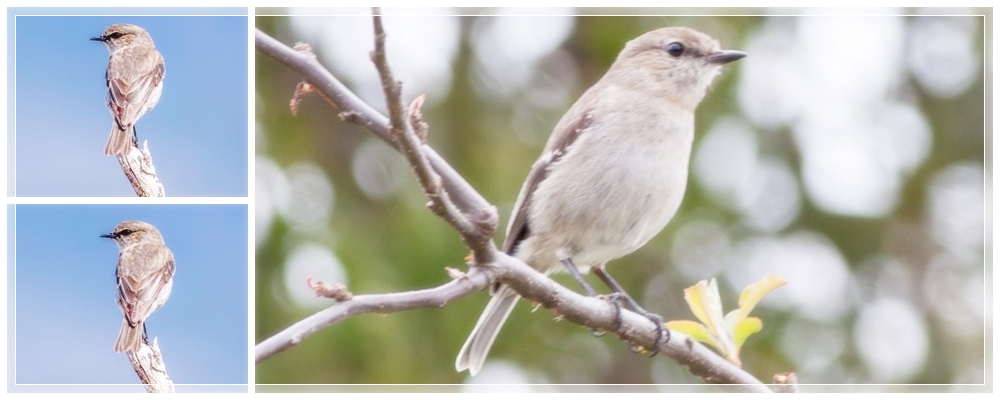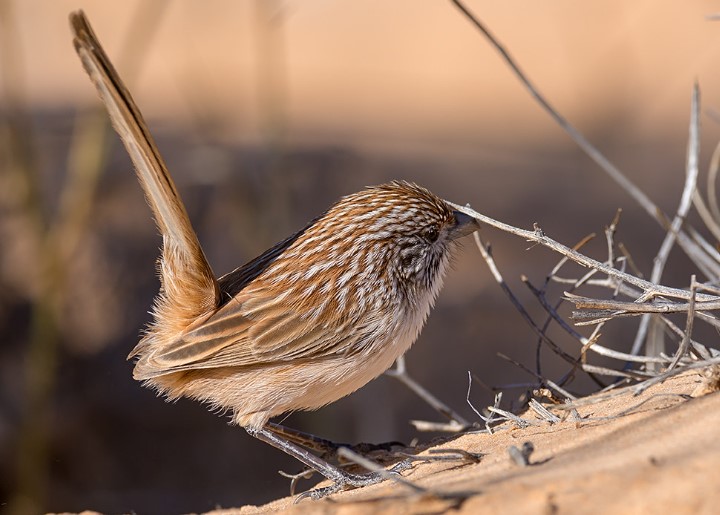Dusky Robin (Melanodryas vittata) is known by several names, such as Stump Robin, Wood Robin, Dozey Robin, Native Sparrow, Sleepy, and Sad Bird. It is a member of the Australian Robin family Petroicidae. It is a bulky sedentary robin that frequents a wide range of wooded habitats, from the edges of rainforest to open woodland with shrubby undergrowth. Everywhere it needs open ground to forage. Though, it lacks vibrant colors, but very attractive in their habitats. Its binomial name “vittatus” comes from a Latin word that means ‘banded’.
A dusky robin feeds by perching on bare twigs or stumps and pounces on its prey on the ground rather than on trunks or ledges. It sits silently and motionless on bare twigs or stumps, occasionally flicking its tail and waiting to dive on prey on the ground as it pounces on some in the air or on the ground.

The dusky robin diet includes flies, beetles, worms, spiders, and snails. In cooler seasons, family groups may forage widely, but in spring adult pairs return to established territories in the denser forests to breed.
The size of the dusky robin is about 160–170 mm in length and weighs around 26-27 grams.
ADULTS: Both sexes are similar. However, the Upper parts are dark grey-brown. It has a short, slender bill and a moderately long tail. Wings and tail are dusky, with the off-white band in the base of flight feathers and the outer tail tipped white. The throat is off-white color; while the rest of the underparts are light brown, with the center of the belly white. His eyes are brown. Bill and feet are black. The immature bird is uniformly brown, but the juveniles are coarsely streaked above and mottled below with brown and white.
The call of the dusky robin is a low, far-carrying double whistle, monotonously repeated, by both sexes. SONG: Due to its sorrowful, melancholic song, dusky robins are also called sad birds or sad robins. Though the song is a little lively and sweetly plaintive choo-wee, choo-we-er. Their vivacity rather than musical taste is what makes them sing rarely. A bird’s song can be heard throughout the year, but it’s often heard at sunrise.
Nesting and breeding occur from July to December-January. The nest is compact to loose cup-shaped nest, of bark strips and rootlets bound with cobwebs; 63 x 40 mm inside; lined with grass and fine vegetable matter; 1-6 meters from the ground in hollows of stumps or fallen trees, and limbs of bushes.
The bird lays usually three eggs; pale green-blue to brown-olive with obscure darker shadings. The eggs are oval in shape at a size of about 22 x 16 mm. The incubation period is about 14-15 days. There are two, perhaps three broods a season. Dusky Robin is confined to Tasmania and Bass Strait islands. Though it is a sedentary or locally nomadic bird and depending on the food availability. There are two races: one, rustier, endemic to King Island.
Related Robin – Hooded Robin (Melanodryas cucullata)







